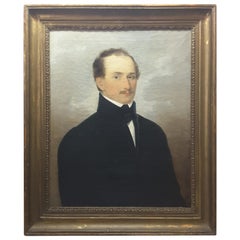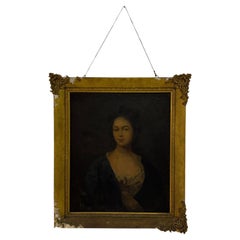John Opie
John Opie was a Cornish historical and portrait painter. He painted many great men and women of his day, including members of the British Royal Family and others who were most notable in the artistic and literary professions. Opie's artistic abilities eventually came to the attention of a local physician and satirist, Dr. John Wolcot (Peter Pindar). Recognizing a great talent, Wolcot became Opie's mentor, buying him out of his apprenticeship and insisting that he come to live at his home in Truro. Wolcot provided invaluable encouragement, advice, tuition and practical help in the advancement of his early career, including obtaining many commissions for work. In 1781, Opie moved to London with Wolcot, having entered into a formal profit-sharing agreement with him. Although Opie had received a considerable artistic education from Wolcot, the doctor chose to present him as a self-taught prodigy. A portrait of a boy shown at the Society of Artists the previous year had been described in the catalog as "an instance of Genius, not having ever seen a picture." Wolcot introduced the "Cornish wonder" to leading artists, including Sir Joshua Reynolds, who was to compare him to Caravaggio and Velazquez and prospective patrons. The business arrangement with Wolcot lasted for a year, after which Opie informed the doctor that he now wished to go it alone, leading to the estrangement of the two former partners. Through the influence of Mrs. Boscawen, Wolcot managed to have Opie introduced at the court of King George III. The king purchased one of his pictures and commissioned him to produce a portrait of Mary Delany. He also received commissions to paint the Duke and Duchess of Gloucester, Lady Salisbury, Lady Charlotte Talbot, Lady Harcourt and other ladies of the court. Opie's residence at "Orange Court," Castle Street, Leicester Fields, was said to be "crowded with rank and fashion every day" and he was the talk of the town. In 1786, he exhibited his first important historical subject, the Assassination of James I and in the following year the Murder of Rizzio, a work whose merit was recognized by his immediate election as an associate of the Royal Academy, of which he became a full member in 1788. Opie died in April 1807, aged 46 and was buried at St Paul's Cathedral, in the crypt next to Joshua Reynolds, as he had wished.
Late 18th Century British George III Antique John Opie
Canvas
Mid-19th Century English Victorian Antique John Opie
Paint
Mid-18th Century British George III Antique John Opie
Canvas
1790s French Louis XVI Antique John Opie
Mirror, Wood
Early 18th Century Italian Baroque Antique John Opie
Paint
18th Century Russian Antique John Opie
Wood
1790s English Antique John Opie
Canvas, Wood
Early 18th Century Italian Antique John Opie
Canvas, Paint
1790s English George III Antique John Opie
Canvas, Giltwood
Early 18th Century Italian Louis XIV Antique John Opie
Canvas, Wood
18th Century French Louis XVI Antique John Opie
1770s Belgian Baroque Antique John Opie
Hardwood
Late 17th Century Belgian Baroque Antique John Opie
Canvas


